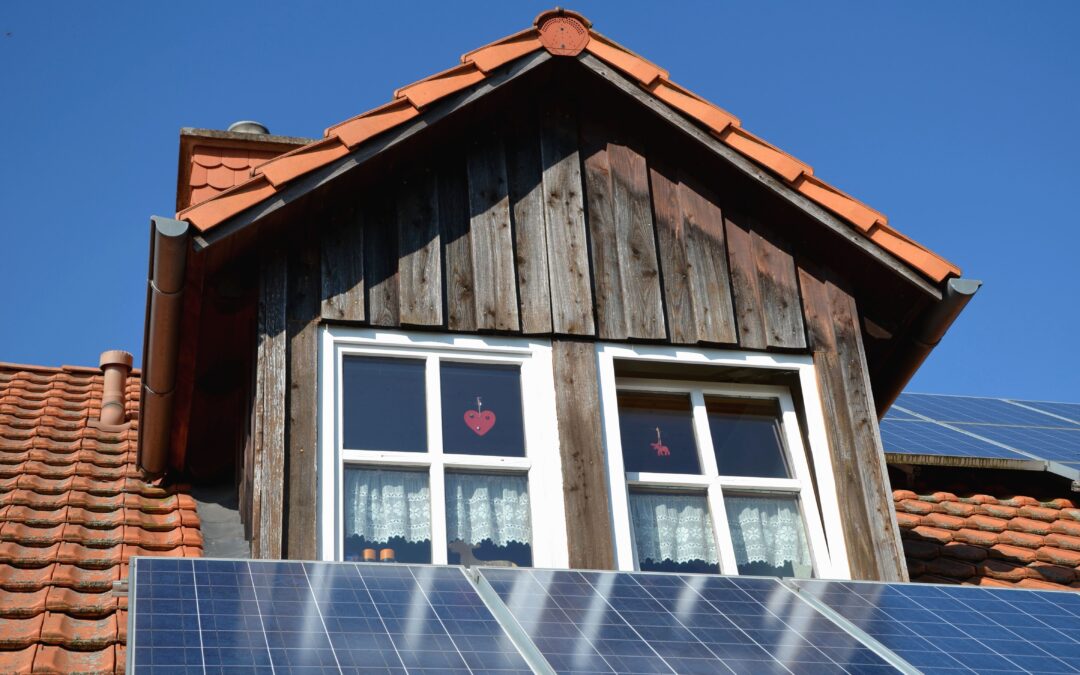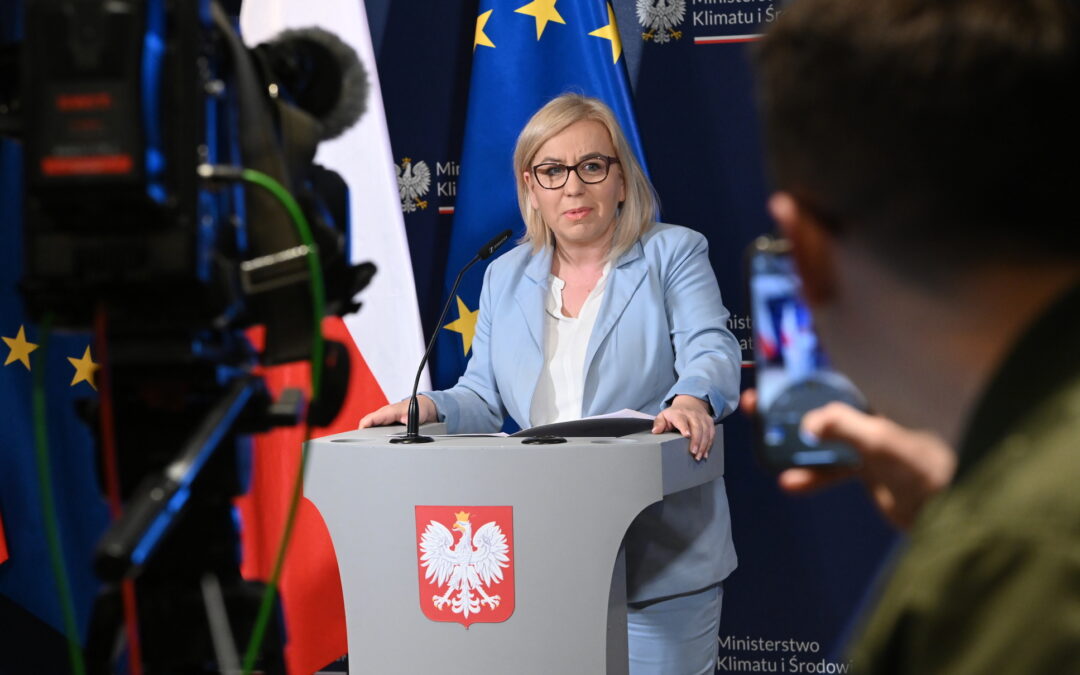By Jakub Wiech (tekst dostępny również w wersji polskiej)
Government subsidies have propelled a boom in home solar panels. The scheme has been so successful that it is now running out of money. Further support can help drive Poland’s transformation towards cleaner energy.
The power of energy transformation
The Mój Prąd (My Electricity) programme is one of few truly innovative and properly implemented initiatives for Poland’s energy transformation. The scheme provides individuals with subsidies for building photovoltaic micro-installations (with a capacity of 2 to 10 kW) at home.
As a result, in October, Polish solar power grids reached a combined installed capacity of 2.6 GW. By comparison, the capacity of Bełchatow power station, the country’s largest plant, is around 5.3 GW. Poland’s photovoltaic installations increase their capacity by 5-7% each month, and annually around 150-160%. In 2019 alone, 104,000 photovoltaic installations were connected to the network in Poland.
The programme leverages investment: by offering a relatively low subsidy – up to 5,000 zloty (€1,100) per installation – it triggered the building of tens of thousands of such units across the country. During just the first round of applications, processed from August to December 2019, funds amounting to around 132 million zloty launched investments costing a total of 815 million zloty.
The main reason for the scheme’s popularity is its simplicity: since March, applications have been online-only, requiring only basic documents about the investment. Applicants can also track the progress of their request online. According to current calculations, a typical investment in solar panels for a family house could be returned within just six years – while such an installation has a lifespan of around 25 years.
According to data from the National Fund for Environmental Protection and Water Management (NFOŚiGW), which administers the programme’s funds, by 12 November some 94,655 subsidies had been paid, reducing My Electricity’s billion-zloty budget by almost half. The programme website shows that it now has 528.1 million zloty left to spend.
In reality, however, there is much less money left, as a result of the continued surge of people interested in funding. Estimates of the applications submitted by September this year suggest there were around 130,000 in total.
The same month, NFOŚiGW announced that applications submitted to date amounted to 651 million zloty. This means that, assuming all applications are approved, the programme budget has less than 350 million zloty left. Now, several weeks later, the actual reserve of funds is certainly smaller still.
According to various media reports, this level of interest means that My Electricity could run out of money before the end of this year’s round of applications, on 18 December. Drying up funds for solar power could disrupt its development in Poland and be a blow to a sector, whose rapid growth and current energetic operation have been enabled by the programme.
Growing interest in green energy
Macroeconomic concerns have also contributed to the development of photovoltaics in Poland. Polish electric utilities are becoming increasingly unprofitable and expensive, mostly owing to the increase in prices of carbon dioxide emissions permits. This then raises electricity costs for end-users.
The possibility of using photovoltaic installations to compensate for some of these increases is becoming an increasingly attractive option for many Poles. In practice, this means signing a contract with an energy vendor involving offsetting the energy produced by photovoltaic panels with that which the household uses from the network.
The excess energy produced by the panels is retained in energy storage facilities, or, more often, sent to the national electrical grid, which then serves as virtual storage. When the solar panels are not working (at night, for example), the owner of the installation gets energy from the grid. At the end of the billing period, the energy vendor settles accounts with customers who provide it with electricity from solar installations.
Such is the interest in photovoltaics in Poland that many businesses have been springing up, offering installation of solar panels, trading in energy storage facilities or providing consulting in the field. Banks have also noticed consumer interest, offering various loans for investment in solar power, with marketing methods often verging on greenwashing.
Also significant for the development of solar energy – but also for programmes supporting small-scale water retention – is the increasing environmental awareness and sensitivity of Poles. This has been visible in Polish electoral campaigns in the past two years,
For the first time in the history of Polish elections, climate, energy and environmental issues played an important role in candidates’ manifestos.
Szymon Hołownia, an independence candidate who came third in the presidential election, proposed an energy mix based in 75% on renewables. The centre-left party Spring (Wiosna) called for an end to use of coal in Poland by 2035, while the ruling conservative Law and Justice (PiS) party promised a just energy transition towards renewables and low-emission capacity.
Campaign debates focused on issues of air quality, decarbonisation, energy security, preventing environmental degradation and improving Poland’s hydrological situation.
All of the main presidential candidates apart from incumbent Andrzej Duda took part in an online climate debate on #EarthDay.
All agreed on the need to reduce Poland's reliance on coal and to tackle the problem of drought, though differed on how to do so https://t.co/XLHdMSvvdb
— Notes from Poland 🇵🇱 (@notesfrompoland) April 22, 2020
The dynamic development of photovoltaics in Poland is also an attempt to bridge the gap to Europe’s other big economies. At the top of the list is Germany, where the installed capacity in solar power plants is already more than 50 GW. Interest is so great that Poland’s western neighbour this year abolished limits to support for this technology.
But this comes at a price – in September alone, support for German renewable sources stood at €3 billion. Italy (22 GW), the United Kingdom (13 GW), France (10 GW) and Spain (9 GW) also all have powerful networks of generation units.
In Ukraine too, production of capacity using this technology has increased from 0.5 GW in 2016 to a current level of 6 GW, due in part to the country’s own support model for solar power plants based on high guaranteed fees for energy sales.
A second push
Although funds for the programme are drying up – and the pandemic will mean even less will be available – continuation would fit the government’s energy transformation plan as part of the Energy Policy of Poland until 2040 (PEP2040) project. According to this document, installed capacity in photovoltaics is to increase almost ten times within two decades – to a level of 20.2 GW.
The increase in the number of units harnessing this technology will help to avoid situations such as those from 2015, when a heatwave, as well as power station renovations and faults, led the Polish government to introduce the so-called level 20 of power supply, meaning rationing of electricity to some consumers. The system simply had too little active energy to power the country.
Michał Kurtyka, the climate minister, has given reassurances about the programme, noting that it will be continued and extended with subsidies for heat pumps and energy storage facilities. These words were confirmed by Artur Michalski, NFOŚiGW’s deputy CEO, at the Economic Forum in Karpacz. According to him, the government is also planning to expand subsidies to incorporate electric car charging.
The My Electricity programme has shown that there is room for photovoltaics in Poland, and the initiative will therefore not end with spending a billion zloty. Polish energy needs renewable, diverse energy sources – only fast development of these technologies will make it possible to balance increasing energy prices with achieving climate goals for the coming years.
Without the necessary dynamic of the development of renewables, the transformation envisaged by PEP2040 will also be impossible. Along with nuclear power plants, such installations are to be the foundation of Poland’s low-emission energy sector.
Translated by Ben Koschalka
Main image credit: congerdesign on Pixnio





















